Second Baptist in South Los Angeles, one of the oldest black churches in Southern California, commissioned a neighborhood report to figure out how it can expand its mission of social justice to a community that looks very different than its congregation.
“This church [has] become a transitional Hispanic community,” said Pastor William Epps.
In the last few decades, South Los Angeles has shifted from a predominately black community to a majority Latino community. Latinos make up 88 percent of a community where streets are named after civil rights icons like Martin Luther King Jr. and Malcolm X. Most people in the area are immigrant Latino, with African-Americans making up only 11 percent of the neighborhood.
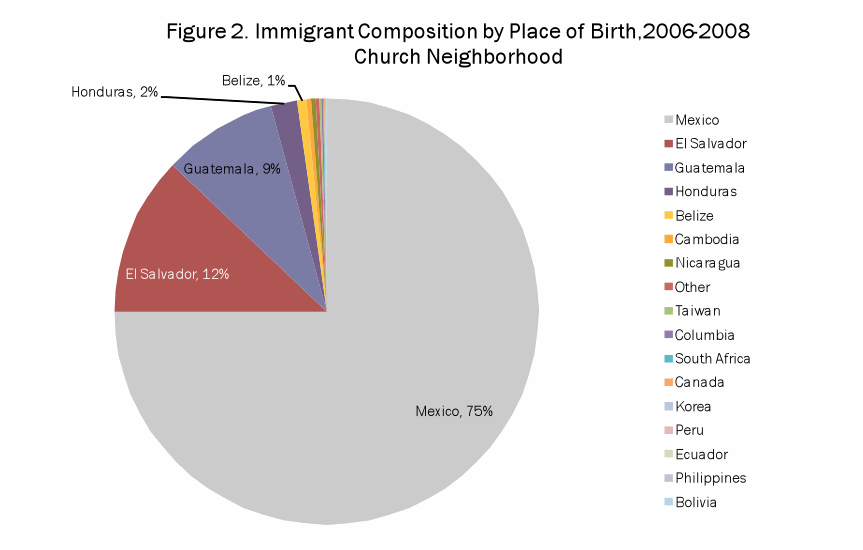
The stories of black and brown conflict, surfacing over cultural differences or perceived job competition, have often defined what this community has become.
Even the church has felt the challenges. It was once home to the civil rights movement on the West Coast. Martin Luther King Jr. spoke from the pulpit and the church helped fund legal briefs for the Supreme Court case Brown v. Board of education, which paved the way for desegregation in schools.
“People used to walk to church,” said Epps. Now, most congregants commute to the church, often keeping it out-of-touch with the needs of the neighborhood.
Pastor Epps realized the difficulty continuing a social justice mission in a changed community when he took his job in 1987.
“I dubbed my years the ‘challenging years’ because it would be hard to maintain a viable congregation in a changing neighborhood,” said Epps, “and at the same time keep congregants excited about doing ministry that may not always benefit them personally.”
But as Second Baptist marks its 125th year in the community, the church is wondering how a congregation of commuters can spread its social justice ministry to a transformed neighborhood.
The church received a grant and commissioned USC’s Center for Immigrant Integration and Esperanza Community Housing to study the neighborhood, its needs and figure out ways the church might help.
“This is one of those neighborhoods where immigration is an issue, the environment is an issue and it all comes together, and it’s right there,” said Vanessa Carter, a researcher on the project.
The researchers looked at census data, environmental data, and surveyed more than 500 residents about living conditions in the area. The report, which was published earlier this fall, shows grim conditions in South Los Angeles.
The community is very poor, with families often living in overcrowded homes. The median household income in the Second Baptist neighborhood is $29,164, compared to the LA Metro figure at $54,993.
Heavy traffic from nearby freeways makes the area environmentally toxic. Residents are also mostly newcomers, often isolated from the rest of Los Angeles.
On average, residents are younger in this community compared to the rest of LA. They are also more mobile, only 7 percent of the people surveyed had lived in the community for more than 20 years. Most lived there ten years or less.
There are challenges to creating relationships with this community. Many don’t speak English and families often leave before reaching five years in the neighborhood. But the researchers on the project note similar experiences between the Black and Latino communities, where the church could build common ground.
“The way that incarceration affects the Black community and makes it hard to have a good paying job and pulls apart families, is the same way that deportation can affect a Latino family,” sais Carter. “They are different issues, but they have similar effects.”
While Pastor Epps finds the detailed statistics about the community revealing, the battles the neighborhood faces now, with poverty, poor housing and education, are not new to the church.
“The plight of Hispanics seeking full citizenship is similar to the plight of African Americans in the 60s. You can see a lot of the parallels,” said Epps.
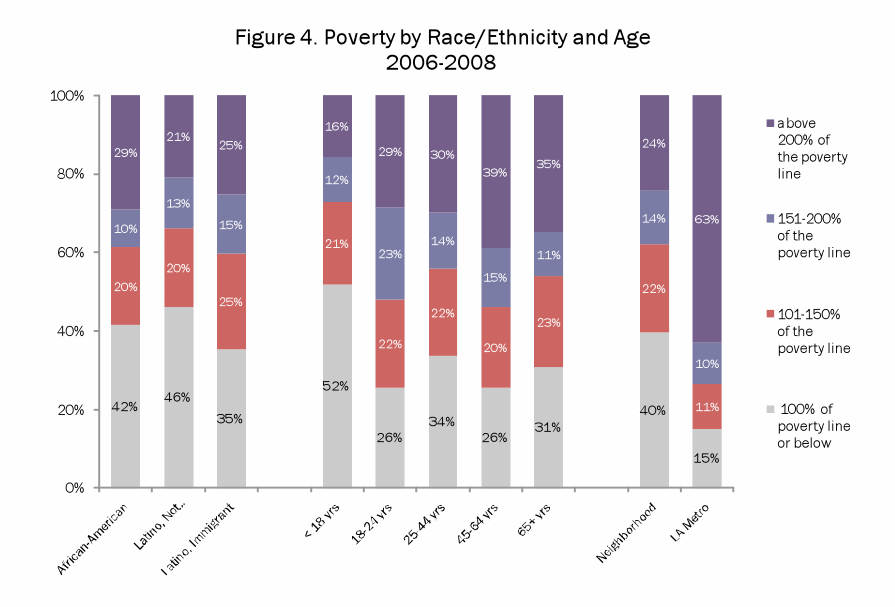
The report recommended ways the church could serve the community. The church owns property in the area and the report suggested the church could work with other community groups and find ways to utilize the property for childcare or affordable housing.
“Anybody who cares about making the society right, making the society a place where everyone can progress, regardless of their ethnicity or immigration status, has to worry about the unity of Blacks and Latinos as we move forward,” said Manuel Pastor, director of Center for Immigrant Integration.
Second Baptist hasn’t made any concrete plans on how they will use the data to expand their mission of social justice. But, those on the project say, understanding the new neighborhood is good place to start.
“I think that the church has the political will and the moral will to work with other groups of like mind and like mission so that we can we advance the cause and make this community better than what it is,” said Pastor Epps.
Timeline of the Second Baptist Church:
Graphs courtesy of University of Southern California’s Center for Immigrant Integration









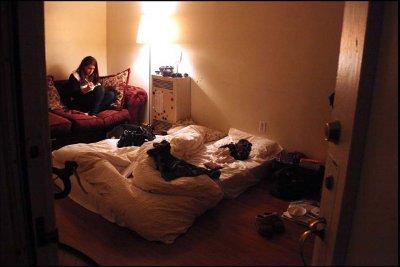 A strange project is underway and I’m still not sure how I feel about it.
A strange project is underway and I’m still not sure how I feel about it.
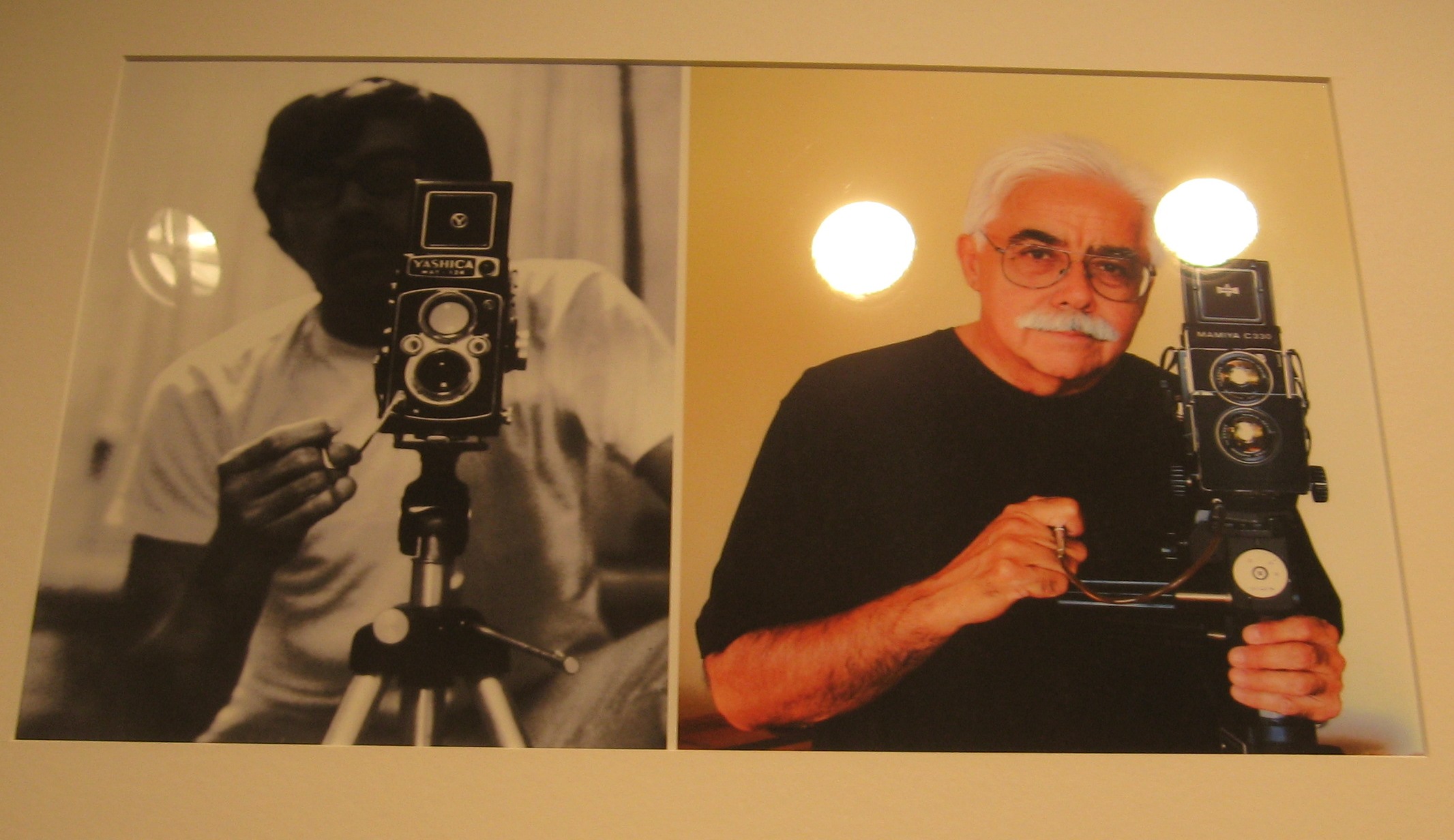 A man in a cowboy hat sits alone on a bench beside Echo Park lake. The foreground is dark, and the man is shrouded in the shadow of a tree. He seems isolated, lonely. His face is lowered just slightly enough to suggest despair. His jacket and upturned collar are a strange juxtaposition against the sunshine of Los Angeles. Beyond the grassy verge lies infinite light – a world of burdening heat, to seek refuge from in the shade. Or perhaps a bright city, with new opportunities floating on the crest of every sparkling ripple and into the busy streets above.
A man in a cowboy hat sits alone on a bench beside Echo Park lake. The foreground is dark, and the man is shrouded in the shadow of a tree. He seems isolated, lonely. His face is lowered just slightly enough to suggest despair. His jacket and upturned collar are a strange juxtaposition against the sunshine of Los Angeles. Beyond the grassy verge lies infinite light – a world of burdening heat, to seek refuge from in the shade. Or perhaps a bright city, with new opportunities floating on the crest of every sparkling ripple and into the busy streets above.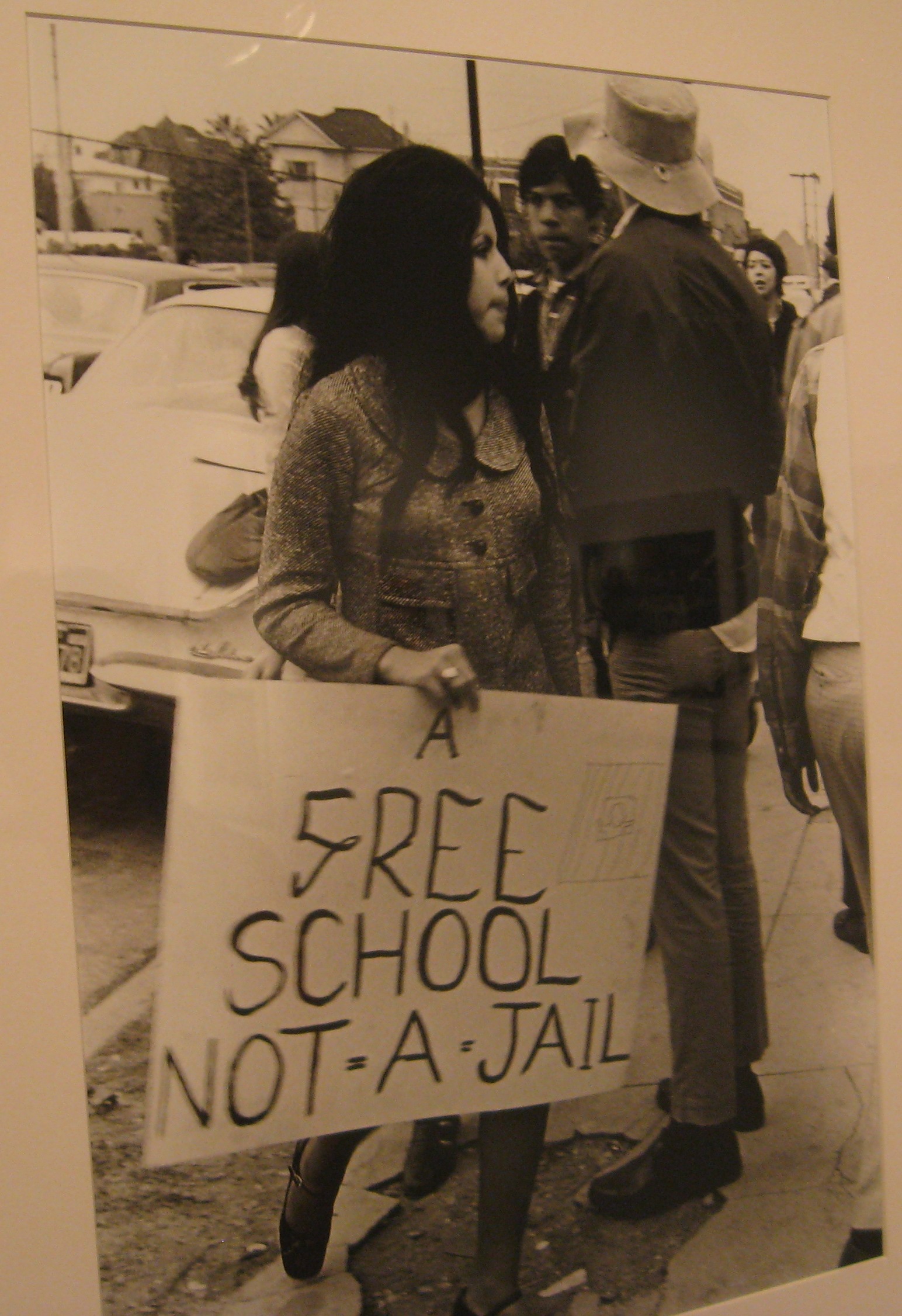 Castillo has been documenting Chicano society since he moved to Los Angeles with his family from El Paso, Texas when he was 16 years old. It was tumultuous time. The city’s demographics were shifting rapidly, and the Chicano Civil Rights Movement was erupting in an energetic rush. Castillo witnessed the "High School Blowouts" in 1968, snapping the pictures "Down with Brutality" and "A Free School Not-A-Jail" during a student protest at Roosevelt High School in Boyle Heights.
Castillo has been documenting Chicano society since he moved to Los Angeles with his family from El Paso, Texas when he was 16 years old. It was tumultuous time. The city’s demographics were shifting rapidly, and the Chicano Civil Rights Movement was erupting in an energetic rush. Castillo witnessed the "High School Blowouts" in 1968, snapping the pictures "Down with Brutality" and "A Free School Not-A-Jail" during a student protest at Roosevelt High School in Boyle Heights. 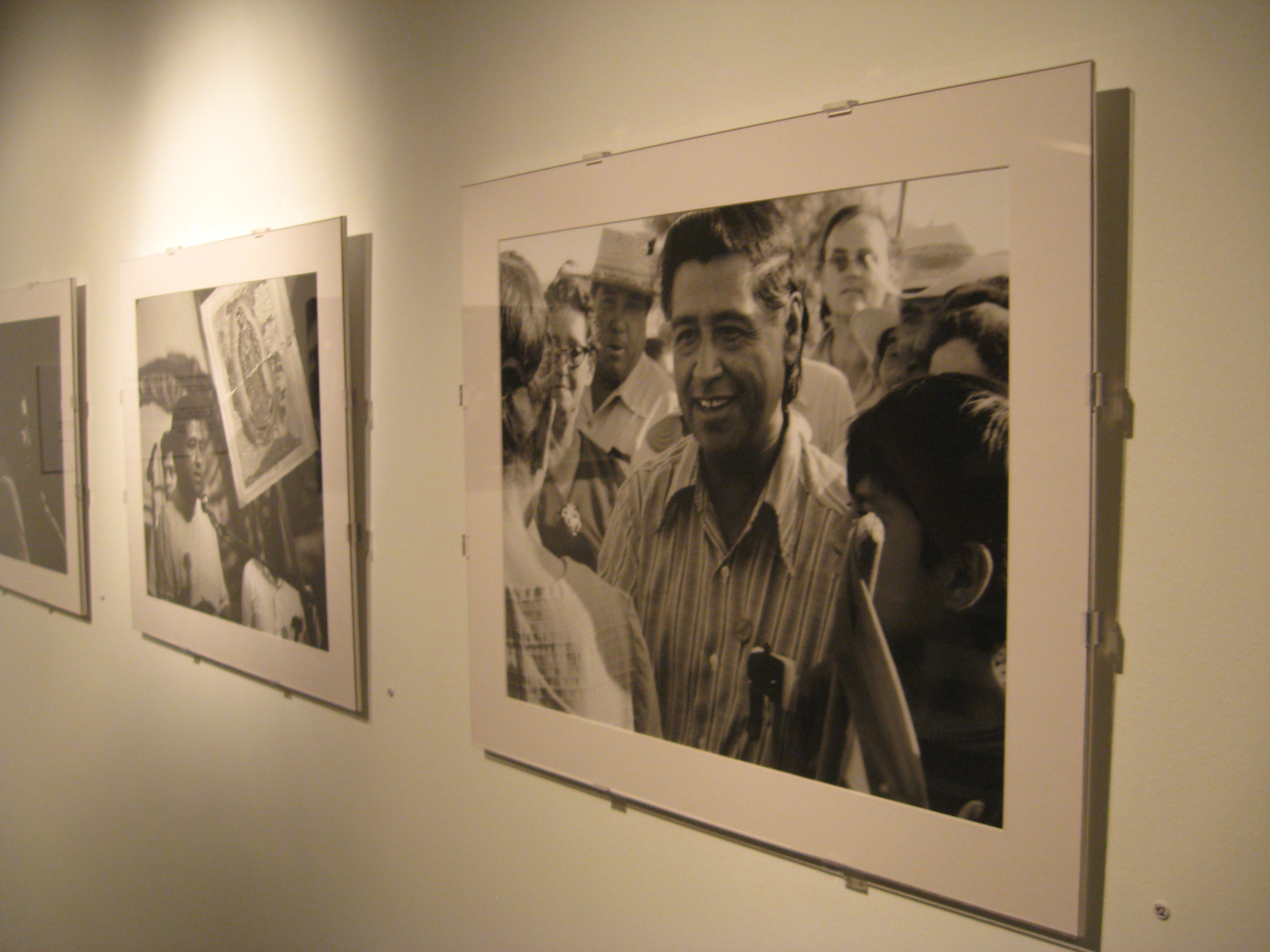 The images are naturally iconic, evocative of the sepia-toned sentiment that accompanies historical art work. But clustered together in the basement room of the Theatre Center building, Castillo’s work risks becoming reminiscent, rather than present. The exhibit is composed of faces and scenery now long familiar, and rests heavily on the symbolism of a revolutionary era, rather than seeking to break new ground. Among the powerful depictions, the simpler images stood out. The subtlely of a mother walking with a young child beside a graffited brick wall, or two young women, one holding a baby, waiting for a bus beside an extravagant mural, seemed more resonant than the rallies, speeches and politics.
The images are naturally iconic, evocative of the sepia-toned sentiment that accompanies historical art work. But clustered together in the basement room of the Theatre Center building, Castillo’s work risks becoming reminiscent, rather than present. The exhibit is composed of faces and scenery now long familiar, and rests heavily on the symbolism of a revolutionary era, rather than seeking to break new ground. Among the powerful depictions, the simpler images stood out. The subtlely of a mother walking with a young child beside a graffited brick wall, or two young women, one holding a baby, waiting for a bus beside an extravagant mural, seemed more resonant than the rallies, speeches and politics. .jpg) Later, an African-American man, dressed in multi-colored, tie-dye pants and a customized leather jacket, leaned in and adjusted his glasses to get a closer look at four similarly-clad Latino men inside one of the frames. "Los Four," taken in 1974, shows artist-friends of Castillo’s smiling happily beside their bright, spray-painted mural, designed to promote graffiti as art, not vandalism.
Later, an African-American man, dressed in multi-colored, tie-dye pants and a customized leather jacket, leaned in and adjusted his glasses to get a closer look at four similarly-clad Latino men inside one of the frames. "Los Four," taken in 1974, shows artist-friends of Castillo’s smiling happily beside their bright, spray-painted mural, designed to promote graffiti as art, not vandalism.





